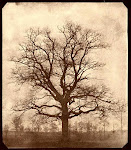c.1942
The Defense Postal Savings Stamp Albums were distributed by the U.S. Treasury,
mostly through the Post Office Department. It was a way for the government to
have the public help finance the war effort. War savings stamps were first
issued in 1917, during World War I. In May, 1941, the America on Guard series
appeared, consisting of 10, 25, 50 cents, $1 and $5 denominations. Use was
encouraged as a way for the public to save money and at the same time contribute
to the war effort.
School children would fill an "album" with $18.75 of low denomination stamps, 10-cents or 25-cents, and hand it in to the post office in exchange for a War Savings Bond, which would mature in 10 years to $25.00. Adults could buy larger denomination stamps, place them in correspondingly higher value "albums" and trade them in upon completion for $50.00, $100.00 or higher denomination War Savings Bonds. The program continued after the Second World War, ending in June 1970. (source: National Postal Museum)
School children would fill an "album" with $18.75 of low denomination stamps, 10-cents or 25-cents, and hand it in to the post office in exchange for a War Savings Bond, which would mature in 10 years to $25.00. Adults could buy larger denomination stamps, place them in correspondingly higher value "albums" and trade them in upon completion for $50.00, $100.00 or higher denomination War Savings Bonds. The program continued after the Second World War, ending in June 1970. (source: National Postal Museum)



















1 comment:
Excellent piece of history.
Post a Comment